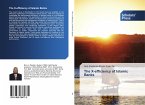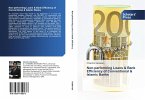The Islamic State of Libya (ISIS) began to take over oil fields in late spring 2014. Since then, ISIS has expanded its operations by creating a loosely integrated and thriving black economy, consisting of approximately a hundred percent of Libya's oil assets. The terrorist organization has also managed to set up an extensive network of middlemen in neighboring territories and countries, with the aim of trading crude oil for cash and in kind. Upon extraction, the commodity is first lightly refined on site and then a shadow supply-chain network takes over, to bring it to the market Are there any oil terminals in the South-East Mediterranean Sea used by ISIS and its shadow network as export gateways for smuggled crude? We answer this question by tapping into the proxy indicator of tanker charter rates. First, we look at the map for crude oil loading terminals that geographically fall within, or border the sphere of ISIS control.
Bitte wählen Sie Ihr Anliegen aus.
Rechnungen
Retourenschein anfordern
Bestellstatus
Storno








